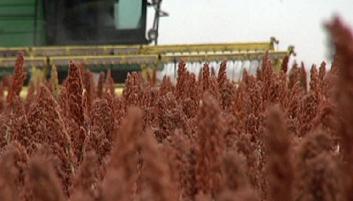


Sorghum is traditionally thought of as a fodder plant, but there is a growing movement of food-grade sorghum.
The Hutchinson News reports that for the past three years at elevators in Brenham, farmers have hauled in loads of food-grade sorghum. It is one of a few locations across Kansas taking in largely a white sorghum that is good for milling into flour.
Bobby Martin, general manager of Southern Plans Co-op, said about 12,000 bushels of white sorghum were binned at Brenham the first year. But last year, it surpassed 100,000 bushels, and this year will reach that number, if not top it.
“We have a waiting list,” Martin said of farmers who want to participate.
After the sorghum in binned at Bernham, the milo is shipped in 2,000-pound bags to a supplier in Texas who turns it into flour.
Martin said it is not as simple as planting and cutting a crop the conventional way. For instance, fields should be clean of weeds and shattercane. Combines have to be cleaned and free of gluten.
But Martin said that for those who get the system down, growing food-grade sorghum is beneficial.
“There is a premium for the farmer,” he said.
Unlike conventional red milos used for feed, white milo is bred specifically for the food market. Red milos typically leave a pink color to products.
Martin said the food-grade sorghum “is not genetically modified. We know all the farmers who raise it.”
Scott County farmer Earl Roemer mills all his milo crop into flour at his Nu Life Market. He said this is the first year he has expanded his “farm to fork” program to include a handful of other farmers, all of whom must follow Roemer’s food safety guidelines, including making sure combines are free of gluten and implementing certain protocols during the growing process.
His growers range from farmers in Nebraska to west Texas.
Source: Demand increasing for food-grade sorghum / LJWorld.com

